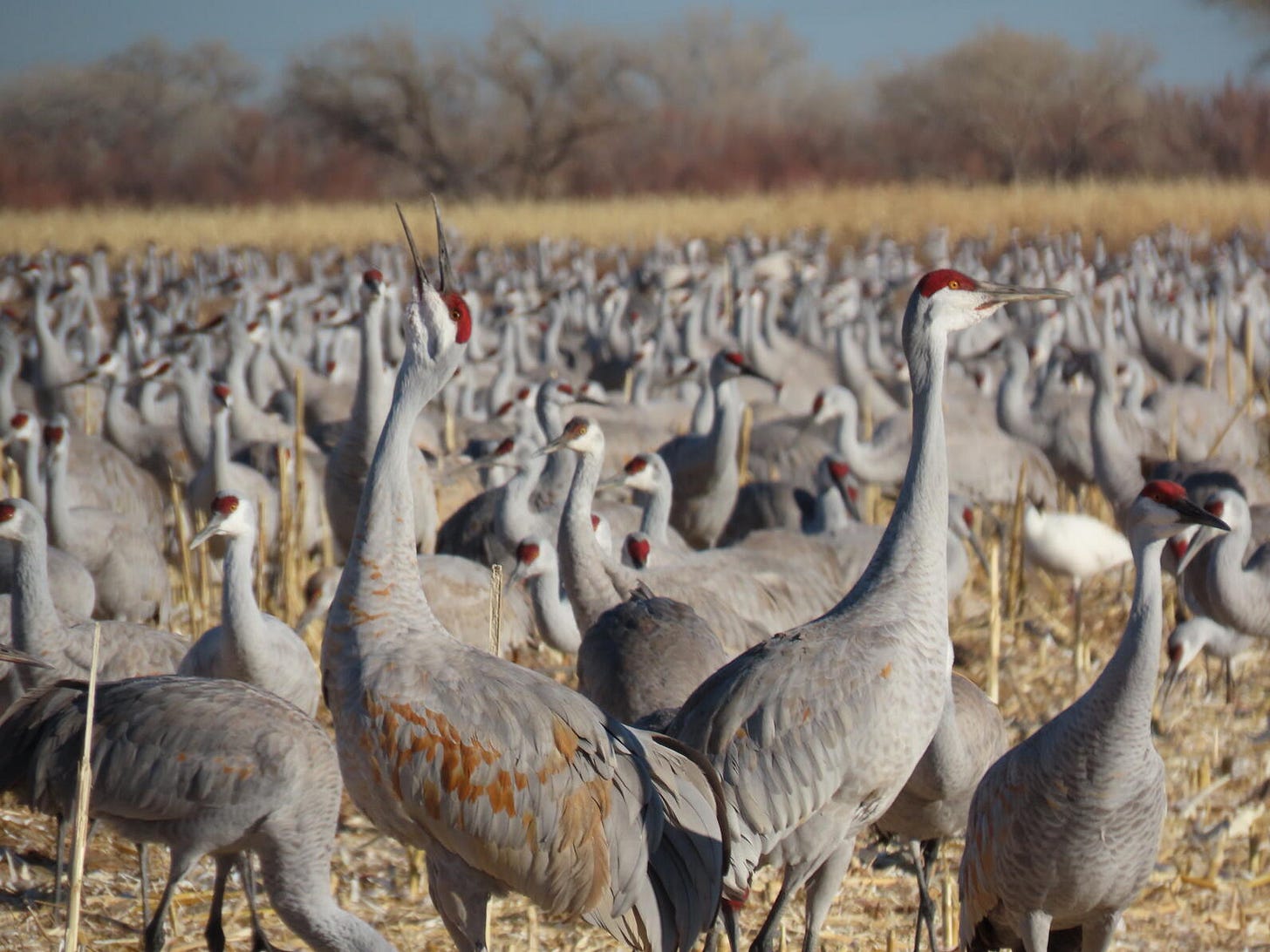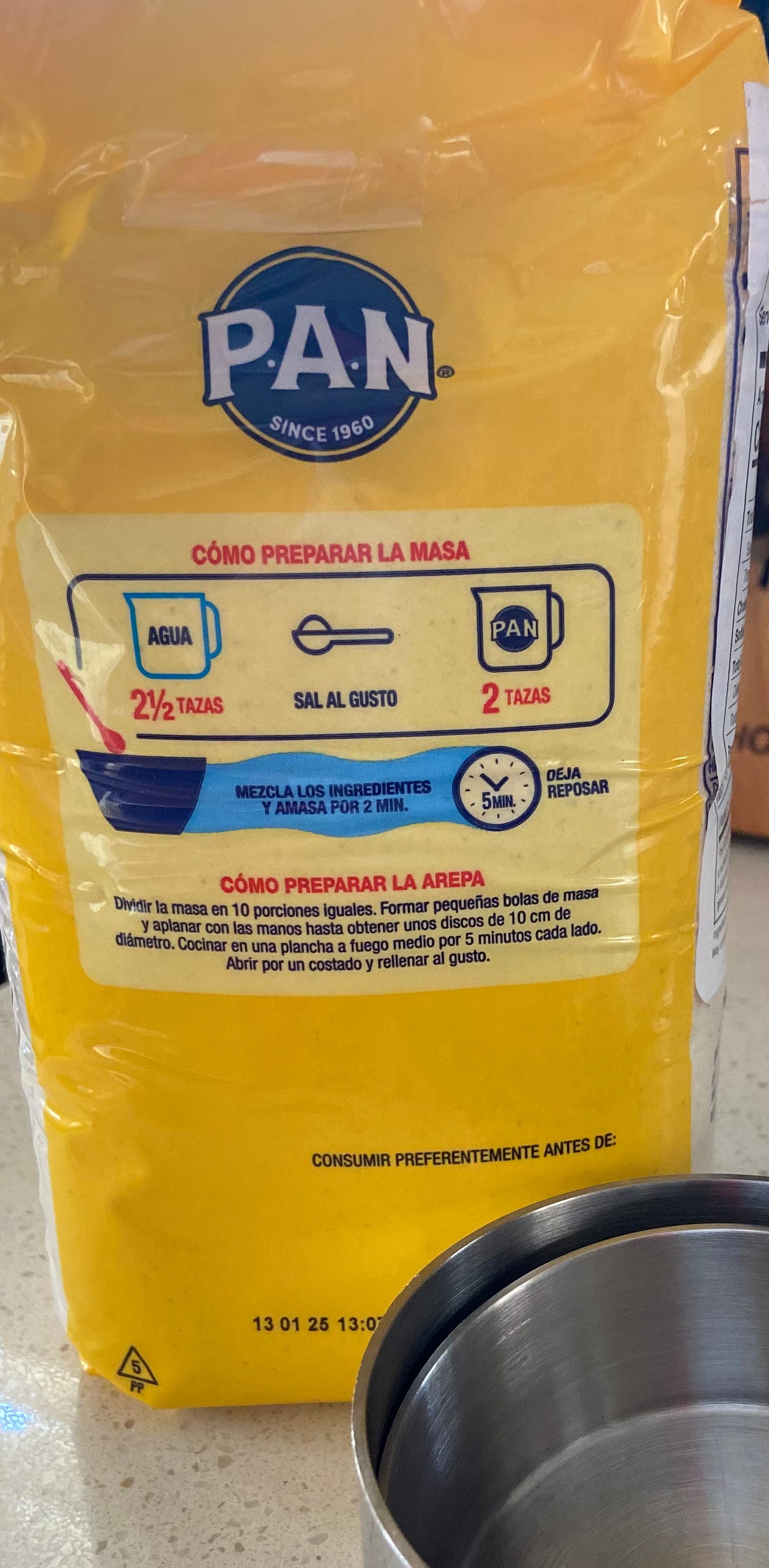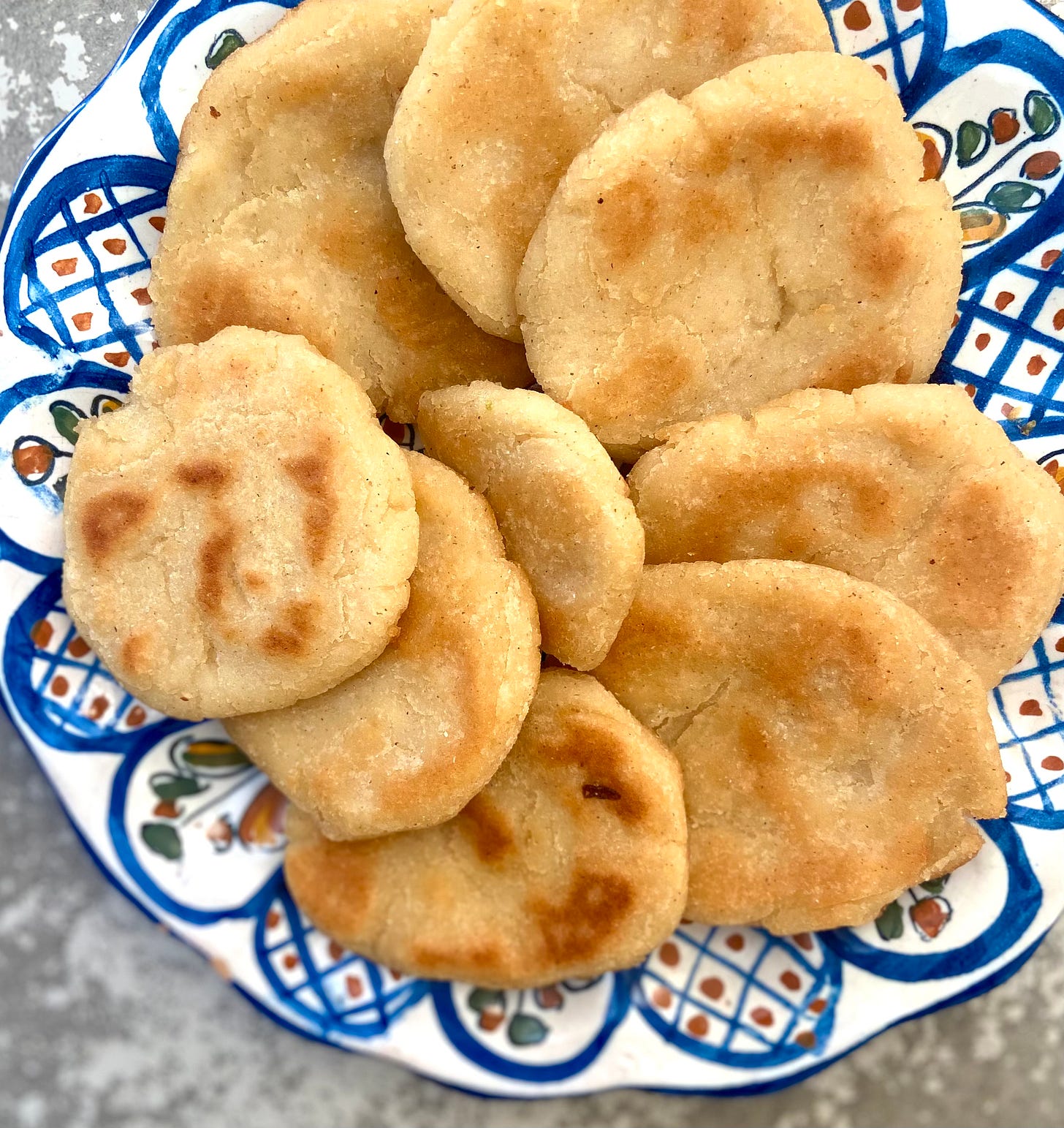AREPAS RESCUE
CHRONICLE: ALBUQUERQUE, NEW MEXICO APRIL 3, 2024
Greetings Chroniclers! Thanks again for reading, for turning another page with me. I hope you enjoy today’s post about how cooking arepas helped soothe a yearning for connection.
This week, I tried making Arepas for the first time.
I’m not entirely sure why.
How is it possible to yearn for something I’m not very familiar with?
Here at Lonely Kitchen Chronicles, I explore how making sense of the world, feeling connected to where I’m living or traveling, happens in large part through food and cooking.
I see, I taste, I know.
That’s my pattern, my entry into discovering things unknown or deepening a familiarity with things held at an arm’s length distance.
I’ve moved seven times in the past thirty-five years. I’ve had plenty of practice with my see, taste, know method of getting comfortable in a place.
And yet, since choosing to move back to Albuquerque in 2022, (for the third time), it’s proven more difficult than I anticipated to feel at home.
I see the beauty here, the grandeur of the Sandia Mountains. I am in love with the blue of high desert skies, the incandescent sun, the vistas that stretch for miles. During the fall, when the sandhill cranes announce by honking their return to their winter home in and around Bosque del Apache, I find myself thinking how lucky I am to live in this place.
And while all these things are true about this unique and diverse place, I’m also seeing the crime, the generational poverty, the dysfunction that challenges Albuquerque’s economy despite its population growth.
It leaves a bad taste in my mouth.
Which is why this past week I needed a palate cleanser, something to wake up and shake up my taste for this place, to remind me of all the goodness and possibilities that exist here.
This reminder came in the form of arepas.
Arepas, corn cakes, hail from Colombia and Venezuela. I’ve traveled to a lot of places, but I’ve never been to either of those countries.
But somehow arepas were the food I wanted to prepare and eat to satisfy a craving for a sense of belonging in a city I sometimes struggle to feel good about living in.
The recipe for arepas is pretty stripped down. All you need is a kind of corn flour called masarepa, water and salt. That’s it! The tricky part, not so tricky really, comes in the forming and cooking of arepas. But like most things, all it takes is just a little bit of practice and repetition.
I made arepas using the recipe that is printed on the back of the masarepa bag. Yes, it’s in Spanish, but there’s also a corresponding pictorial as a guide. Here’s what it looks like.
Like I said above, making arepas takes a bit of practice. I made them twice. The second time I made them the results were much better. What I discovered was that the faster they brown in a bit of oil (I used avocado) in a Dutch oven the better. Then they need about fifteen minutes or so in a 400 degree oven. Here’s a photo of the first and second batches.
You can eat your arepas with just a swab of butter and salt. Or you can top them with a small amount of just about anything savory like beans and cheese, or shredded chicken, avocado and your preferred salsa.
The other day, as I was listening to another outstanding interview on NPR’s 1A program, Jen White asked her guest, Eric Weiner, author of The Geography of Bliss, to give two or three ways we can increase our happiness. Here’s part of his answer:
“Three things quickly. Take a hike, read a book, call a friend. That was a much shorter list than I was expecting.”
I couldn’t agree more. The only thing I’d add is to make something yummy to eat, then call that friend to share the spoils of your labor.






